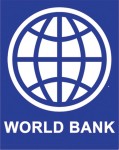Updated
Tangier, Morocco: Success on the Strait of Gibraltar | World Bank: Private Sector Development Blog
The World Bank’s Private Sector Development Blog takes a look a success story in Morocco:
 In late 2014, the World Bank’s Competitive Cities team visited the Moroccan city of Tangier, to carry out a case study of how a city in the Middle East & North Africa Region managed to achieve stellar economic growth and create jobs for its rising population, especially given that it is not endowed with oil or natural gas reserves like many others in the region.
In late 2014, the World Bank’s Competitive Cities team visited the Moroccan city of Tangier, to carry out a case study of how a city in the Middle East & North Africa Region managed to achieve stellar economic growth and create jobs for its rising population, especially given that it is not endowed with oil or natural gas reserves like many others in the region.
In just over a decade, this ancient port city went from dormant to dominant. Between 2005 and 2012, for example, Tangier created new jobs three times as fast as Morocco as a whole (employment growth averaged 2.7% and 0.9% per year, respectively), while also outpacing national GDP growth by about a tenth. Today, the city and its surrounding region of Tanger-Tétouan is a booming commercial gateway and manufacturing hub, with one of Africa’s largest seaports and automotive factories, producing some 400,000 vehicles per year (with Moroccan-made content at approximately 35-40%, and a target to increase that share to 60% in the next few years). The metropolitan area now boasts multiple free trade zones and industrial parks, while also thriving as a tourist destination. As in our previous city case studies, we wanted to know what (and who) drove this transformation, and how exactly it was achieved.
Both geographically and metaphorically, Tangier sits at the crossroads of trade routes and civilizations – on African soil, but just a few miles from Europe’s southern shores. Throughout its history, this exceptional location has attracted merchants, bankers, artists, vacationers, and all manner of adventurers, becoming a cosmopolitan, multilingual place, highly tolerant of diversity…[FULL STORY]